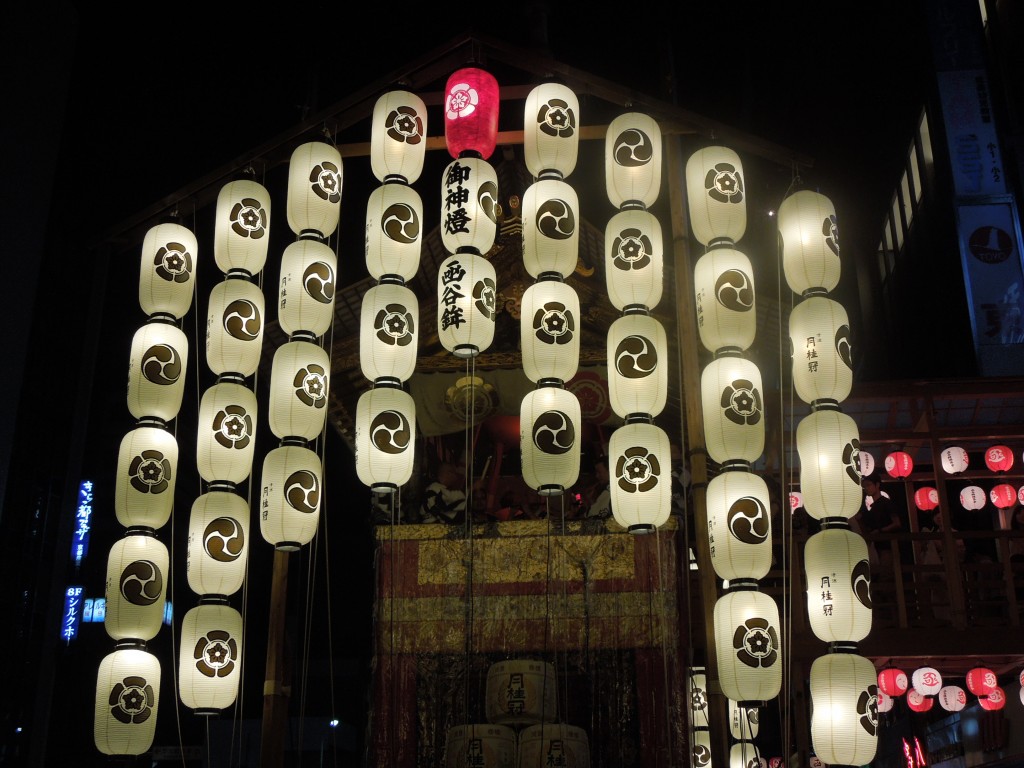
Kyoto's nightscape adorned with lanterns on the Gion Matsuri floats
For three evenings before the Gion Matsuri main parade on May 17, the centre of Kyoto is closed to traffic (known as pedestrians’ heaven) as the area is packed with crowds making their way around the various floats and other items on display. The evening before the parade is known as ‘yoiyama’, the evening before that is yoiyoiyama, and the evening before that is ‘yoiyoiyoiyama’.
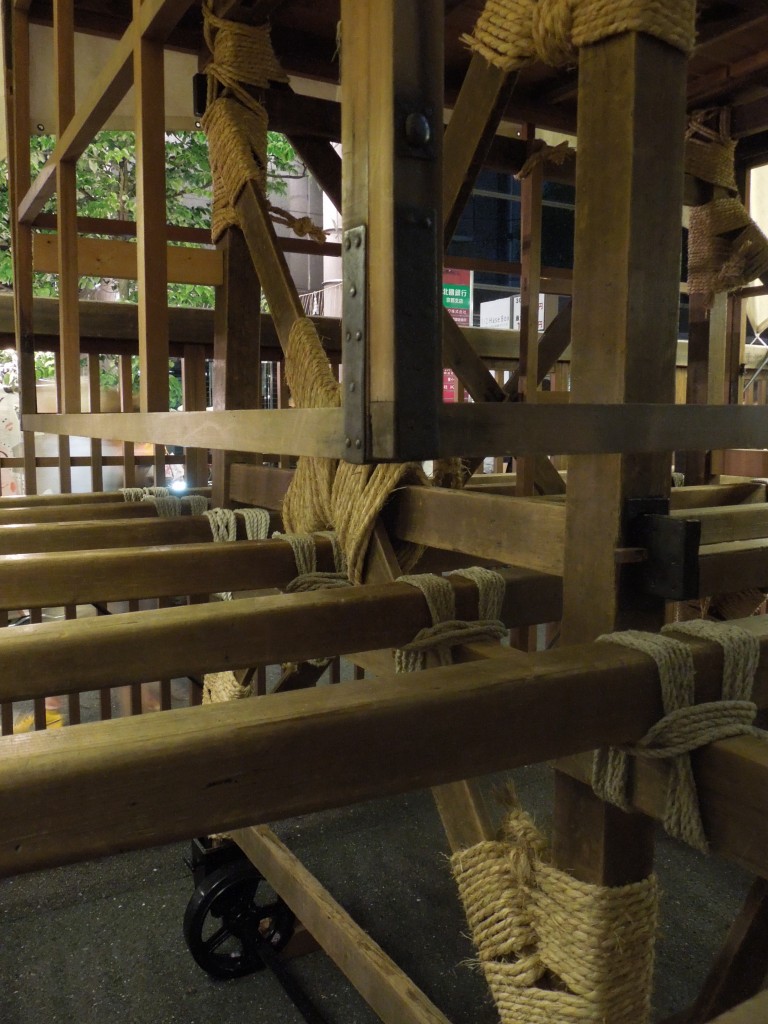
Japanese craftsmanship with wood and rope. Not a single nail is used in the floats, which are disassembled after the parade.
People dress up in all kinds of costumes, but mainly yukata, and there’s a party atmosphere. Getting round to see the floats is quite a challenge as some of the streets are absolutely packed – 270,000 attended last night by official accounts.
There are two kinds of floats: yama, which carry some kind of exhibit on them, and the hoko on which musicians sit and which have a tall spire-like decoration on top. Yama are much more numerous; hoko are only few in number, but cause most of the excitement during the parade as the wheels cannot turn round corners but have to be manoeuvred with wedges and great difficulty.
I managed to get around several of the traditional floats last night, and here I’ll focus on one yama and one hoko to show the differences. The Hashi-Benkei yama features a scene from the Noh play about the legendary encounter between the youthful high-class Yoshitsune and the warrior-monk Benkei. The latter had been descending on Kyoto from Mt Hiei, where he was based, and challenging strangers to duels. In this way he had accumulated 999 swords from his defeated opponents, and was hoping for the 1000th when he came across Yoshitsune in disguise as a woman on Gojo Bridge, but by skilful athleticism Yoshitsune was able to defeat the mighty Benkei (think Robin Hood and Little John).
The dolls on the float (see below) have an inscription saying 1563 by Koun, who was the top sculptor of his time. The float always appears in the parade as the 25th, one of 8 floats whose position in the procession is fixed. (The rest are chosen by lottery.)
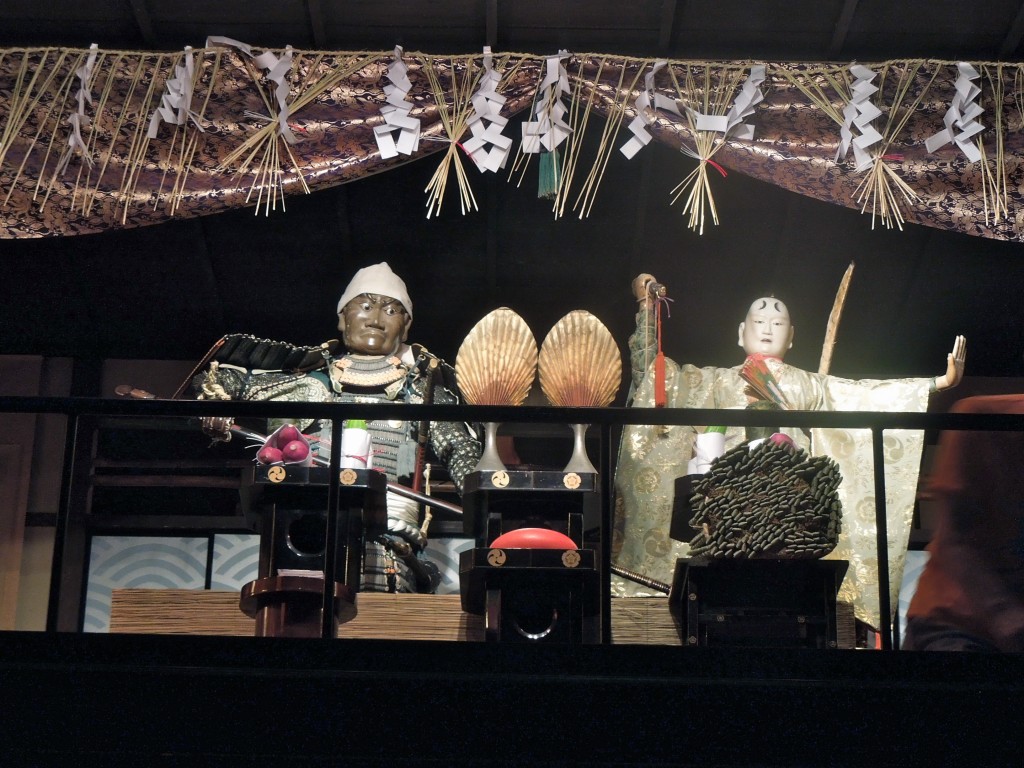
The Yoshitsune and Benkei puppets on display on a veranda. Before the parade, they will be mounted on the 'yama' float.
Hoko have tall ‘spires’ and feature musicians seated on the tall wagons above the enormous wooden wheels. They are draped with hangings, and the Naginata hoko that leads the procession has tapestries from as far away as Iran, China, Mongolia and Korea. Naginata is a long sword, featured on the front of the hoko, which symbolically clears away impurities and evil spirits. The original, preserved as a treasure, was made about 1000 years ago by master swordsmith, Sanjo-Kankoji Munechika. The long sword now seen on the float is made with bambook covered in tin foil. The chigo (young spirit boy) is always seated in the naginata at the head of the procession.
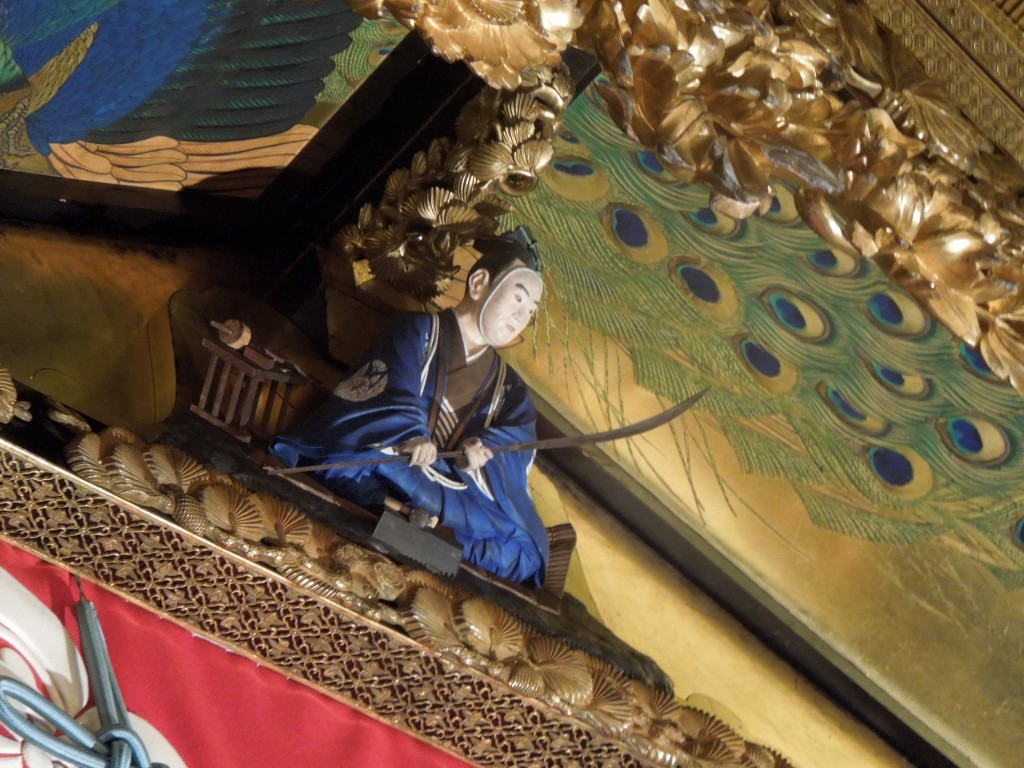
The Naginata hoko, with long sword emblem
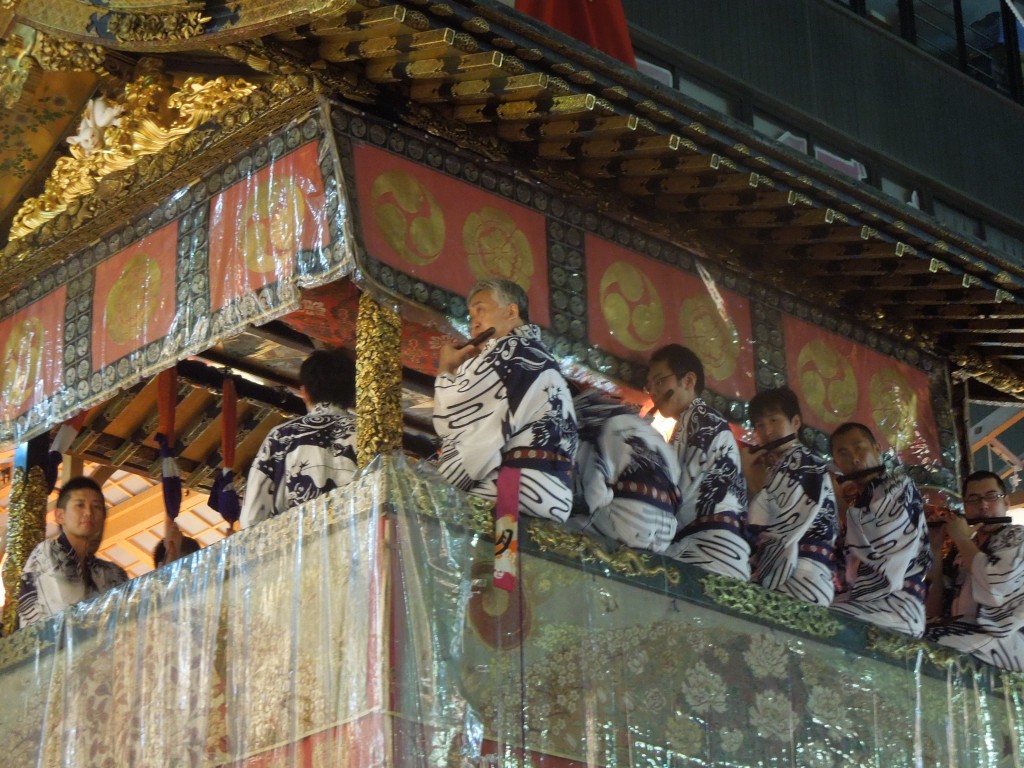
Musicians on the raised platform of a hoko playing characteristic Gion bayashi music

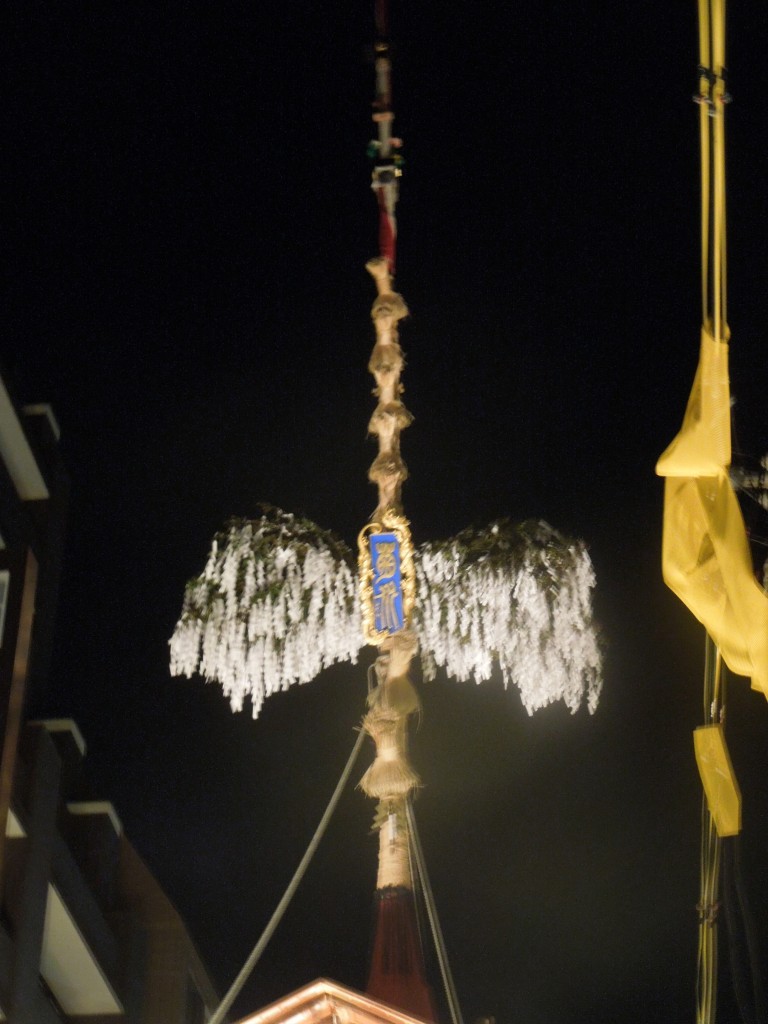
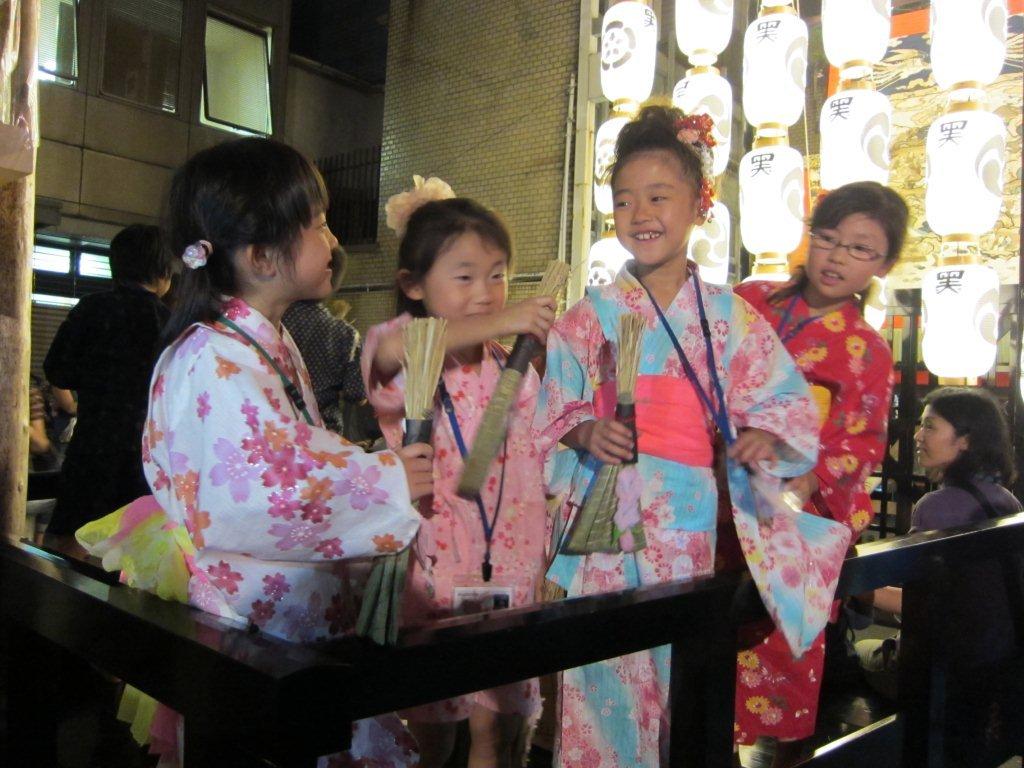
Leave a Reply